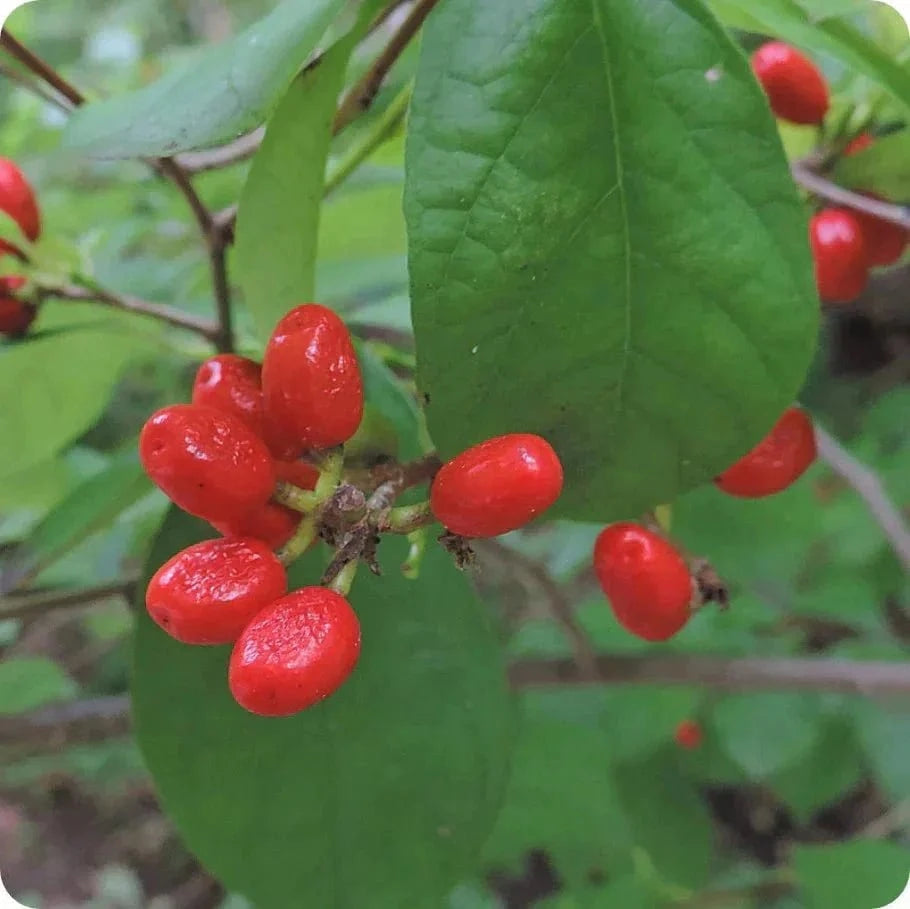Northern Spice Bush
Northern Spice Bush
| Order | Percentage Discount | ||
|---|---|---|---|
| 2-5 | 25% Off | ||
| 6-10 | 30% Off | ||
| 11-25 | 35% Off | ||
| 26-50 | 45% Off | ||
| 51+ | 65% Off | ||
Couldn't load pickup availability
Northern Spice Bush - Lindera Benzoin
Northern Spice Bush, or Lindera benzoin, is a native shrub from the laurel family. It is found throughout the eastern United States, growing in shaded areas of woodlands, forests, and wetlands. Its fragrant leaves and colorful fruit make it an excellent addition to any landscape.
Characteristics
It can grow to 6-12 feet tall and has a spreading habit. The leaves are alternate, simple, and ovate, with a glossy texture and a pale green color. The flowers are small and yellow-green and appear in early Spring 2024 before the leaves. The fruit is a bright red, oblong drupe attractive to birds and other wildlife.
Northern Spice Bush's Cultural Significance
Native American tribes have used the shrub for medicinal purposes for centuries. The plant's bark, leaves, and berries were used to treat various ailments, including colds, fever, and rheumatism. The plant has culinary uses; its leaves and twigs can flavor food.
Growing Conditions
Northern Spice Bush prefers well-drained soils rich in organic matter. It thrives in partially shaded areas but can also tolerate full sun. This plant is relatively easy to grow and maintain, making it an ideal choice for gardeners of all skill levels.
Landscaping Uses
An attractive plant can be used as a landscape hedge, border, or specimen plant. Its fragrant leaves and colorful fruit make it a standout addition to any garden. The plant's dense growth habit also makes it an excellent choice for creating privacy in outdoor spaces. The shrub is a versatile and attractive plant that can add color and fragrance to any landscape. Its medicinal and culinary uses have been an essential plant in Native American culture for centuries. Whether used as a hedge, border, or specimen plant, it is an excellent choice for gardeners looking to add beauty and function to their outdoor spaces.
Make sure to plant the shrub close to a walkway where passers-by can brush against the leaves and enjoy the fragrance that gives the plant its name. Every part of this shrub has a beautiful aroma, from the leaves to the flowers to the bark.
The shrub is a deciduous bush that grows from 6 to 12 feet high and has a wider spread than it is tall. It's found naturally along streams and in wet woods in eastern North America. It is a dioecious plant, meaning it's either male or female. If the gardener wants the shrub to produce red, olive-shaped fruit, it must plant male and female plants together.
It blooms from March to May and has fragrant green-yellow flowers along its branches. Somewhat unusually, the male flowers are more significant and showier than the female flowers. The bush likes full sun but can tolerate even deep shade. It is best to plant it in full sun in the northern areas of its range and partial shade in the southern regions.
The shrub has a denser habit in full sun and a more open one in the shade. It needs medium watering and doesn't need pampering, though when the shrub is first transplanted, the fibrous roots need to stay moist. The soil needs to be rich but well-drained, well-aerated and acidic.
The leaves are thick, oblong, or oval and about 5 inches long. At first, they are light green, but then they turn buttery yellow in the fall. Besides being planted around walkways, it is excellent as a hedge or rain garden.
The berries attract birds, and they're a host plant for the caterpillar of the beautiful shrub swallowtail butterfly. Besides that, the shrub has few problems with pests or diseases.
This Is How Your Plants Will Look upon Delivery
Shipping date depends on the date displayed and chosen when you order from the product's page.
We only accept returns on plants verified dead. If you think your plants have died, we offer a 1 year warranty, please use use this File a Claim Link to verify dead plants and start with return warranty process.



I'm so excited to grow this bush. Even the dead twigs when snapped off smell good.






